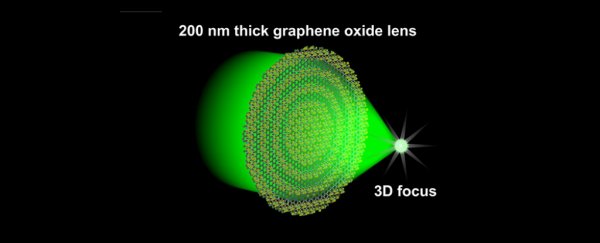Australian researchers have developed a flat lens that's 300 times thinner than a sheet of paper, and it has the ability to provide 3D focus on tiny details that we currently struggle to image. This is known as subwavelength focussing, because it involves viewing objects that are smaller than the wavelength of an individual particle of light.
Why does that matter, you may ask? Well, think of it this way: the new lens could be used to build devices capable of viewing, manipulating, monitoring, and trapping the tiniest particles in real time. In other words, it has the potential to revolutionise the technology used in medical diagnosis and treatment, imaging, sensing, and even computing.
Optical lenses work by focussing light on a specific point so our eyes can perceive it, but right now there's a limit to the size of objects this light can be focussed on. For years scientists have been trying to shrink down flat lenses to overcome that hurdle, but successful concepts have all been extremely complex and hard to produce for real-world applications.
Now a team from Swinburne University of Technology has developed a lens that's only 200 nm thick, using sprayable graphene oxide.
The unique refractive index of the material allows the lens to focus on small objects in 3D in a way that previous lenses haven't been able to. And best of all, the process used to make the ultra-thin lens is cheap and quick, and easily scalable.
"Our lens concept has a 3D subwavelength capability that is 30 times more efficient, able to tightly focus broadband light from the visible to the near infrared, and offers a simple and low-cost manufacturing method," lead researcher Baohua Jia, from Swinburne's Centre for Micro-Photonics, said in a press release.
The researchers were able to produce such a thin structure by converting graphene oxide film into reduced graphene oxide through a photoreduction process. And they believe that they could easily be used in real-world devices.
"These flexible graphene oxide lenses are mechanically robust and maintain excellent focusing properties under high stress," said one of the research team, Xiaorui Zheng. "They have the potential to revolutionise the next-generation integrated optical systems by making miniaturised and fully flexible photonics devices."
The research has been published in Nature Communications.
Love science? Find out more about the research happening at Swinburne University of Technology.
